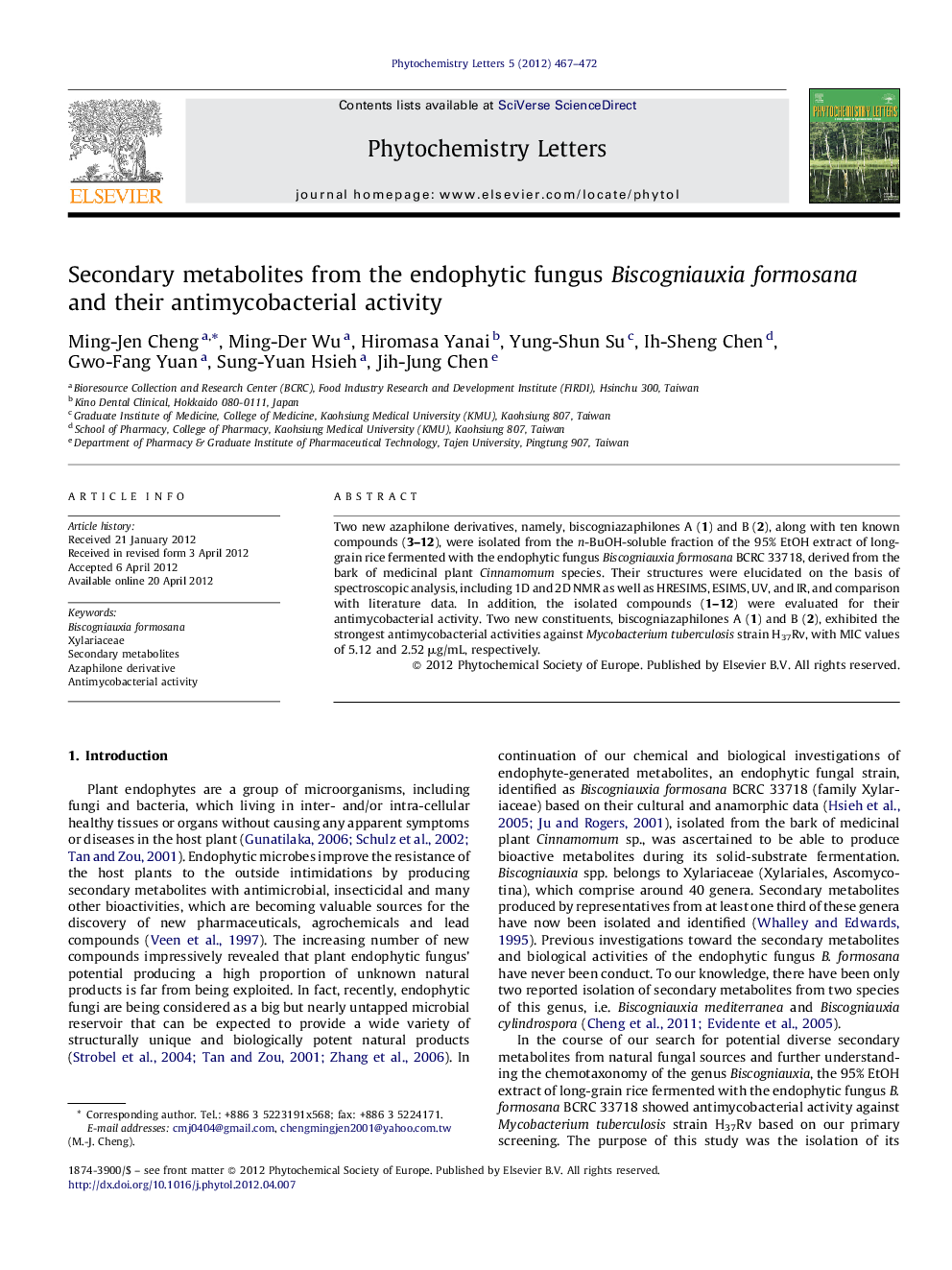| Article ID | Journal | Published Year | Pages | File Type |
|---|---|---|---|---|
| 5177357 | Phytochemistry Letters | 2012 | 6 Pages |
Two new azaphilone derivatives, namely, biscogniazaphilones A (1) and B (2), along with ten known compounds (3-12), were isolated from the n-BuOH-soluble fraction of the 95% EtOH extract of long-grain rice fermented with the endophytic fungus Biscogniauxia formosana BCRC 33718, derived from the bark of medicinal plant Cinnamomum species. Their structures were elucidated on the basis of spectroscopic analysis, including 1D and 2D NMR as well as HRESIMS, ESIMS, UV, and IR, and comparison with literature data. In addition, the isolated compounds (1-12) were evaluated for their antimycobacterial activity. Two new constituents, biscogniazaphilones A (1) and B (2), exhibited the strongest antimycobacterial activities against Mycobacterium tuberculosis strain H37Rv, with MIC values of 5.12 and 2.52 μg/mL, respectively.
Graphical abstractInvestigation of the 95% ethanolic extract of long-grain rice fermented with the endophytic fungus Biscogniauxia formosana BCRC 33718, derived from the bark of medicinal plant Cinnamomum sp. led to the isolation of two new azaphilone derivatives, namely biscogniazaphilones A (1) and B (2), together with 10 known compounds (3-12). In addition, the isolated compounds (1-12) were evaluated for their antimycobacterial activity against Mycobacterium tuberculosis strain H37Rv in vitro.Download full-size imageHighlights⺠Twelve compounds were isolated from the fungus Biscogniauxia formosana. ⺠The isolation and structure elucidation of the two new azaphilone derivatives are described. ⺠Compounds 1 and 2 showed antimycobacterial activities.
